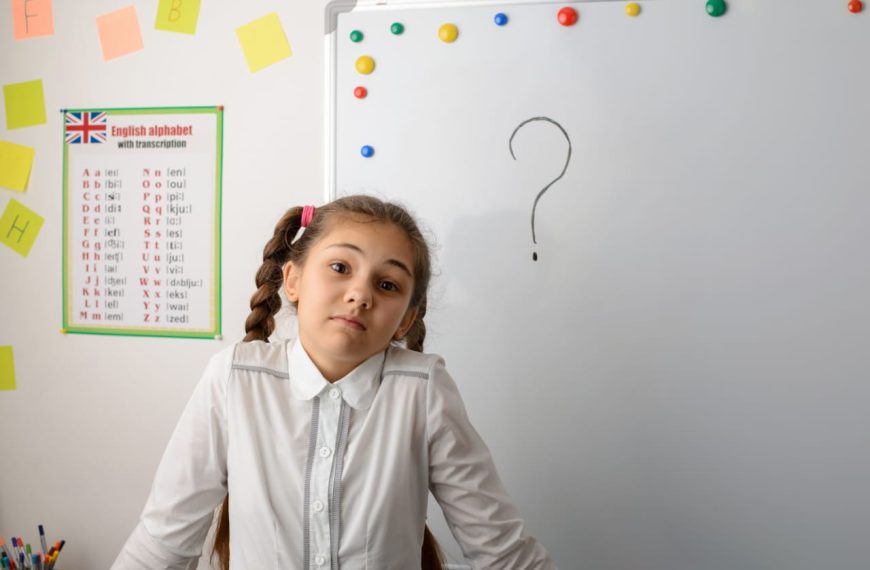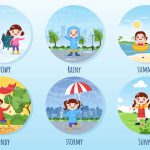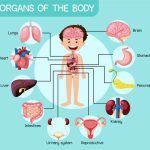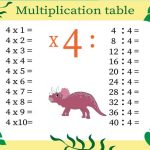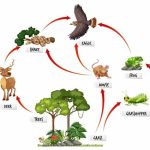English is a tricky language, and just when you think you have figured it out, you get confused between simple words like ‘lay’ and ‘laid’, and a simple bedtime story time or a learning session with your little one turns into an existential crisis. But the truth is that you are not alone. Every parent once in a while slips into this phase where they are confused between words that sound the same or have similar spelling, like ‘effect’ and ‘affect’ or ‘lose’ and ‘loose.’ That’s why, in this blog, we have created a list of confusing English words that confuse kids and adults.
Top 15 Commonly Confused Words
Many confusable words in English either sound the same or look the same but mean different things. And sometimes, these commonly confused words can change meaning with just one letter (like “lose” and “loose”). Here are the top 15 frequently confused words, along with tips on how parents can help their kids understand them more easily.
1. Affect vs. Effect
Affect is a verb. It means to influence. So, if you say that, “Not sleeping well affects my mood.” You mean that not having adequate sleep makes you more vulnerable to a bad mood.
Meanwhile, effect is a noun, and it is a result of something. For instance, people often feel bloated after consuming a large amount of food. It means that having too much food can harm your digestive system.
Parents can explain these commonly confused words to their children using stories. Stories with morals or learnings can be a great way to explain to your little one the difference between ‘affect’ and ‘effect’.
2. Lie vs. Lay
Lie means when you want to rest. Meanwhile, “lay” means placing something, an object, or a thing somewhere. Therefore, if you are planning to take a short break from a long day and stretch your legs for a moment, you would use ‘lie’. “I want to lie down today before the meeting.” On the other hand, you will use lay if you wish to talk about the book on the table.
Parents can use a plush toy to show this to their child. Say, “Let’s make Teddy lie down.” Then, “Let’s lay the blanket on him.” Simple actions make these frequently confused words easier to grasp.
3. Lose vs. Loose
Lose means to misplace something or not win, while loose means not tight or firmly fixed. These words sound similar, which is why kids often confuse them. A great way to teach the difference between these words is by turning them into a story. For example, “Tom lost his marble in the park. While searching for it, he noticed his shoelaces were loose, so he tied them.” This short story combines commonly confused words in a relatable situation, making it easier for kids to understand and remember.
4. Desert vs. Dessert
Desert refers to dry, sandy land, while dessert is the sweet treat we all love after a meal. If a child says, “Camels live in the dessert,” they are confusing two completely different things! Camels belong in the desert, not next to the chocolate cake. Meanwhile, “I love mango ice cream for dessert” is exactly right. To help kids remember this pair from the list of confusing words in English, you can demonstrate the difference with the help of a few objects. For instance, you can gather some sand, toy animals, and cars to engage in pretend play. “Let’s walk the camel across the desert, and now let’s eat dessert at the picnic!” This way, kids will understand the difference between ‘dessert’ and ‘desert’.
Also Read: Ways to Motivate Your Kids to Learn
5. Than vs. Then
Than is used to compare things. On the other hand, then is used to talk about what happens next. If your child says, “I had more fun then you,” they likely meant “than you.” But when they say, “We played outside, then came inside for snacks,” they are absolutely right.
Than and then are commonly confused words because they look and sound almost the same. One simple way to teach this pair is with a mini timeline game. Say, “First we go to the park, then we go home.” Then ask, “Is running faster than walking?” This helps kids understand where each word fits naturally.
6. Its vs. It’s
Its shows ownership, while it’s is short for “it is.” If your child says, “The puppy wagged it’s tail,” they are certainly confused between its and it’s. You can ask your little one to read and re-read the sentence out loud with “it is.” If it fits, use “it’s.” For example, “It’s time for lunch” becomes “It is time for lunch,” which works! But “The cat licked it’s paw” turns into “The cat licked it is paw,” that’s not quite right.
. Your vs. You’re
Your shows that something belongs to you. You’re is short for “you are.” Let’s say your child writes, “Your so funny!” They probably mean you’re very funny. A helpful way to teach this is by using a puppet or a favourite toy of your little one. Tell your child, “This is your Teddy. You’re going to tuck him in.” That shows both meanings, one is about ownership, and the other is about what you’re doing.
Also Read – How Many Letters in the Alphabet
8. To vs. Too vs. Two
To is used when going somewhere or doing something. Too means also or too much. Two is the number 2. Let’s say your child says, “I have to candies.” Do they mean “two candies”? Or maybe they meant “too many candies”? It’s confusing, right? You can play a game with toy blocks. Give your child two blocks and say, “You have two blocks.” Then say, “Let’s go to the playroom.” And finally, say, “Can I play too?” Visuals and repetition help children understand and remember this tricky trio.
9. Accept vs. Except
Accept means to agree or take something. Except means to leave something out. Imagine this: Your child wins a prize and says, “I excepted the award.” That’s not quite right, they accepted it! But if you are talking about who’s coming to the party, and you say, “Everyone is coming except Sam,” then you’re using the right word. Using humour and familiar settings helps kids grasp these commonly confused word pairs more easily.
10. Principal vs. Principle
Principal refers to a person, like the head of a school. Principle means a rule, belief, or value. If your child says, “Our school has strict principles,” they are talking about rules, so “principle” is correct. But when they say, “The principle called my parents,” that’s a confusing spelling moment; the right word is “principal” (the person). Try this: “The principal is your pal.” It helps kids remember the spelling. You can even turn it into a rhyme or a little song. This is a great one to add to your commonly confused words list.
11. Stationary vs. Stationery
Stationary means not moving. Meanwhile, stationery refers to items such as paper, pens, and writing supplies. Let’s say your child says, “My bike is stationery.” That works if the bike isn’t moving! But if they are excited about their new pencil set and say, “Look at my new stationary!” they are clearly confused between stationary and stationery. A fun way to remember? Think “E” for envelope. That “e” in stationery can remind your child that it’s related to writing.
Also Read –Art of Letter Writing
12. Farther vs. Further
Farther refers to physical distance. On the other hand, further refers to metaphorical or additional distance. If your child says, “My school is further than yours,” that’s almost correct. However, since they are discussing actual space, they should use ‘farther’. But if they say, “We need to discuss this further,” that’s about information, not distance, and it’s just right. Use a ball-throwing game: “This ball went farther!” Then pause and say, “Now let’s talk further about how you threw it so well.”
13. Breathe vs. Breath
Breathe (with an “e” at the end) is a verb, which means the action of inhaling or exhaling. Breath is a noun, which is the air you take in. If your child says, “Take a deep breath and breath out,” they have used both words, but one is incorrect. The second part should be “breathe out.” Here’s a helpful activity: Guide your child through a calm breathing exercise. Say, “Take a deep breath. Now breathe in… and breathe out.” Doing it with them makes it easier to remember. This is one of the frequently confused words where just one letter makes all the difference.
14. Break vs. Brake
Break means to shatter something or take a pause. Brake refers to stopping a vehicle. For example, if your child writes, “Dad used the break to stop the car,” they have chosen the wrong word. It should be, “Dad used the brake.” But if they say, “I need a snack break,” that’s just right. You can even make it a game: Grab a toy car and say, “Let’s press the brake!” Then take a pause and say, “Now let’s take a quick break for cookies!” These are commonly confused words that are easy to teach with props.
15. Ensure vs. Insure
Ensure means to make sure something happens. On the other hand, insure means to protect financially, often with insurance. Let’s say your child says, “We need to insure the snacks are packed.” That’s a classic frequently confused word mistake. The right sentence is, “We need to ensure the snacks are packed.” But if they say, “We insured the car,” that’s the right use. To explain it: “Parents ensure you’re safe… and insurance insures the car!” These are best taught by tying them to real-world situations.
Also Read –Difference between Alphabet and Letter for Preschoolers
How Can Parents Help?
Now that you’ve seen this list of confusing words in English, here are three fun ways to support your child:
- Use them in stories: Create bedtime stories that include these frequently confused words. Ask your child to guess what each one means.
- Make it visual: Use flashcards with pictures—especially for confusing spelling pairs like “desert” vs “dessert.”
- Lead by example: Speak and read clearly. Pause when you come across confusing words, and talk through the meaning with your child.
FAQs on Commonly Confused Words
1. What are commonly confused words in English?
Commonly confused words are word pairs that sound alike, look similar, or have related meanings but are used differently. For example, their and there, affect and effect, and your and you’re.
2. Why do children mix up similar-sounding words?
Children often confuse these words due to similar pronunciations, irregular spellings, or limited exposure to vocabulary. Homophones and silent letters add to the confusion.
3. How can I help my child learn confusable words easily?
Use visuals, daily examples, rhymes, and storytelling. Break the word down, show the context, and practice through repetition.
4. What activities can make word learning fun for kids?
Try word-matching games, flashcards, fill-in-the-blanks, puppet shows, mini skits, or drawing examples. You can also use everyday conversations to point out and correct mix-ups.
5. Are commonly confused words part of preschool curriculum?
Not typically. Preschool learning curriculum focuses more on vocabulary building and phonics. Read our blog,
6. Silent Letters vs. Confusing Words — What’s the Difference?
While silent letters are parts of a word that are included in the spelling but not pronounced, confusing words are pairs of words that sound similar but have different meanings.
Final Thought
These commonly confused words can seem like a maze at first. But when you treat language like a puzzle, it becomes fun for you and your little one. Bookmark these commonly confused words and revisit them whenever you need a quick refresher. For more such fun and interesting blogs on your little one’s growth and development, visit EuroKids Blogs. Don’t forget to check out EuroKids Preschools for the first step in your child’s learning journey.
You May Also Like These,
Fun Ways to Teach the Alphabet to Kids





